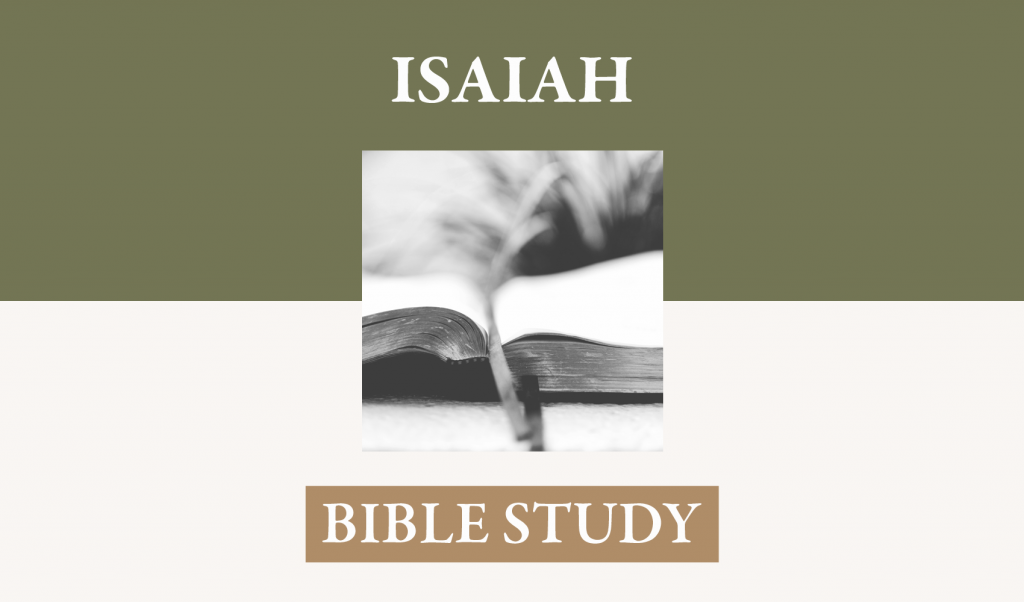Week of February 9, 2020
The Point: Jesus willingly experienced pain and suffering for our salvation.
The Lord’s Coming Salvation: Isaiah 53:2-12.
[2] For he grew up before him like a young plant, and like a root out of dry ground; he had no form or majesty that we should look at him, and no beauty that we should desire him. [3] He was despised and rejected by men; a man of sorrows, and acquainted with grief; and as one from whom men hide their faces he was despised, and we esteemed him not. [4] Surely he has borne our griefs and carried our sorrows; yet we esteemed him stricken, smitten by God, and afflicted. [5] But he was wounded for our transgressions; he was crushed for our iniquities; upon him was the chastisement that brought us peace, and with his stripes we are healed. [6] All we like sheep have gone astray; we have turned–everyone–to his own way; and the LORD has laid on him the iniquity of us all. [7] He was oppressed, and he was afflicted, yet he opened not his mouth; like a lamb that is led to the slaughter, and like a sheep that before its shearers is silent, so he opened not his mouth. [8] By oppression and judgment he was taken away; and as for his generation, who considered that he was cut off out of the land of the living, stricken for the transgression of my people? [9] And they made his grave with the wicked and with a rich man in his death, although he had done no violence, and there was no deceit in his mouth. [10] Yet it was the will of the LORD to crush him; he has put him to grief; when his soul makes an offering for guilt, he shall see his offspring; he shall prolong his days; the will of the LORD shall prosper in his hand. [11] Out of the anguish of his soul he shall see and be satisfied; by his knowledge shall the righteous one, my servant, make many to be accounted righteous, and he shall bear their iniquities. [12] Therefore I will divide him a portion with the many, and he shall divide the spoil with the strong, because he poured out his soul to death and was numbered with the transgressors; yet he bore the sin of many, and makes intercession for the transgressors. [ESV]
“Revelation: human testimony, based on divine revelation, witnessing to the fact and meaning of the Servant’s suffering and death [53:1-9]. Suffering observed and misunderstood [1-3]. This second stanza links with the end of the first. There, the true understanding of the Servant is dumbfounding; here, it is communicated by divine revelation, a message revealed. Without such revelation, who could believe that this one, with His birth and early life, his unimpressive appearance, was the arm of the Lord? Does it not rather stand to reason that He was despised? The theme is presented in alternating ‘we’ and ‘he’ sections. [1] At some point a believing company came into existence, but there was a time when even they esteemed him not. The true reply to the first question, therefore, is ‘No one’, and the second question purposes to explain why this is so. There can be no belief without prior divine revelation; on the basis of human observation alone there is no discernment of who the Servant really is. Believed means to believe what is said, to believe facts. The prophet speaks for those who later came to faith but identifies them with a whole company of spectators who looked at the Servant without understanding. Heard from us is used of the word given to the prophet by God [28:9,19; Jer. 49:14] and is widely used elsewhere for ‘news’ or ‘information [1 Sam. 2:24; 4:19]. The arm of the Lord is not someone/something apart from the Lord but is the Lord Himself in all His power. In Deuteronomy 7:18-19 the acts of the arm were seen while the arm remained invisible, but now it is not a matter of tracing events to an invisible cause but a matter of seeing a person, the Servant, and recognizing that He is the Lord present in power. In 51:19 the arm was called to awake; 52:6 pledged the Lord’s own presence; 52:8 foresaw the Lord visibly coming to Zion; 52:10 noted that the arm had been bared in saving action. Now at last the arm has come, not simply a person behind and through whom the Lord’s power is at work, nor just one signally (even uniquely) upheld by the Lord’s power, but ‘the Arm’ Himself, the Lord come to save. [2] This verse opens with the conjunction for in its explanatory sense. Why did the message of the Servant and the revelation of him as the arm meet with dismissiveness? First, he seemed to have a wholly earthly or natural origin: the imagery of growth out of the soil points to a human ‘family tree’. How could a mere man be the arm of the Lord? Secondly, he grew up before him, i.e. before the Lord. How can he be the arm of the Lord if he is a distinct person over against the Lord, growing up in his presence? Thirdly, there was no evidence of any speciality or distinctiveness. Yet Isaiah’s imagery pointed to the truth for those who had eyes to see, for he reintroduces here the Messianic imagery of 4:2, the ‘holy seed’ imagery of 6:13 and the royal imagery of 10:33-11:1. We ‘feel’ what Isaiah was doing if we recall how blandly the people dismissed the Messianic status of Jesus on the ground that he came from Nazareth, not Bethlehem. The truth was so near for any with a will to seek it and eyes to see it. With beauty, majesty, and appearance Isaiah continues to register the impression the Servant made outwardly. The Servant was not, therefore, noticeably ‘well-built … impressive … handsome’. With every appearance of being a man among men – and not outstanding at that – it was not easy to believe that he could be the Lord come to save. [3] Consequently, far from following him, they shunned him. The repetition of despised in the first and last lines is a typically chiastic structure to emphasize the rejection of the Servant by the people. The reappearance of sorrows in verse 4 indicates that Isaiah is using a man of sorrows as descriptive of the Servant. The Servant was not an incessant sorrower and sufferer but he was notably so, not by reason of his constitution but because he took our sorrows and weaknesses as his own. Acquainted with means either ‘to know’ and hence ‘with personal experience of’, or is a homonym meaning ‘submissive to/humbled by’, and either meaning suits. Both the experience and the willing acceptance of grief matches Isaiah’s portrait of the Servant. Esteemed is an accounting word, a reckoning up of value. When all that the human eye saw and the human mind apprehended was added up the result was zero. With this word, Isaiah completes a diagnosis of our human condition, which he has been unobtrusively pursuing throughout these three verses: to see the Servant and find no beauty in him reveals the bankruptcy of the human emotions; to be one with those who despise and then reject him exposes the misguidedness of the human will; to appraise him and conclude that he is nothing condemns our minds as corrupted by, and participants in, our sinfulness. Thus every aspect of human nature is inadequate; every avenue along which, by nature, we might arrive at the truth and respond to God is closed. Nothing but divine revelation can make the Servant known to us and draw us to him. Explanation: the Servant’s vicarious suffering, our sin and the Lord’s will [4-6]. The Servant is indeed characterized by griefs and sorrows, but they were not his own. This is the way in which verses 4-6 explain verse 3. What the human eye missed, what can be known only by revelation, is now stated in the section which constitutes the heart of the poem. The Servant was alone in his sufferings. Verse 4 contains two emphatic subjects, he and we, and though his sufferings were for us we had no part in them, for we stood aloof, reckoning that he must have deserved all he suffered. There is one emphatic subject in verse 5, he, and this initial stress is reflected in what follows: he was pierced … he was crushed … upon him … his wounds. While he thus deals with our moral and spiritual needs and our broken personhood we are not even mentioned except as contributors of the sin which caused his pain. There are two emphatic subjects in verse 6, All we and the Lord. While the Servant suffers we are still straying, and the Lord, acting as high priest in relation to the Victim-Servant, loads him with our wrong. Thus the Servant suffers in isolation from humanity and in distinction from the Lord; he suffers under our sin and under the Lord’s hand. He acted by means of substitution. According to verse 4, the Servant lifts up and loads our needs on to himself, and in verse 5 his sufferings were the penalty which he paid for our transgressions. According to verse 5c, the chastisement essential to our peace with God fell on him, and it was at the price of his wounds that we have healing. The substitutionary imagery of verse 6c is drawn straight from Leviticus 16. The Servant dealt with every aspect of our need. With all the griefs and … sorrows that blight our lives [4], and the moral and spiritual wrong and guilt that alienates God [5]. Positively, in respect of the former he brings us healing [5d], and in respect of the latter, peace [5c]. His work of suffering fulfilled the will of God. While we were straying, the Servant’s willing sin-bearing was being met by the divine action of sin-imposition. In His Servant, the Lord was dealing with all that merited His wrath. The Servant is the lamb of God. The Servant’s final act: his voluntary, undeserved death and the mystery of his burial [7-9]. This fourth stanza of the poem continues the story of the Servant on from his origin and life [1-3] to the point where he was led out to die. There is also an important verbal link with verses 4-6. In verse 4d he was described as afflicted, and the same verb reappears in verse 7a, but in a reflexive form (he submitted to be struck down). This is the emphasis of the present stanza: the clear-headed, self-restraining voluntariness with which the Servant approached and accepted what happened. The human eye [4] saw him at the mercy of hostile, and even divine, forces; the theologically instructed eye [6] saw the hand of the Lord fulfilling the Servant’s death as a sin-bearing exercise. Now, however, we stand on a very sacred spot indeed, within the Servant’s own consciousness, and we see him, not caught in a web of events, but masterfully deciding, accepting and submitting. The Servant’s tongue and mind were alike disciplined to say an unequivocal ‘yes’ to injustice and to a death he did not deserve. The Servant offered no physical resistance to violence but humbled himself; he offered no verbal resistance but opened not his mouth. Animals go as uncomprehendingly to slaughter as to shearing; the Servant who knew well, went to his death with a calmness reflecting not an ignorant but a submitted mind. What for them is the nature of the beast was for him a thought-out, voluntary course. The towering theological genius of Isaiah is nowhere more apparent than here. Substitutionary sacrifice lay at the heart of his own experience of God [6:5-7]. Of all people, he knew the efficacy of the altar and the sacrifices God had appointed, yet somewhere between the profoundly real experience of 6:7 and the vision of the substitutionary role of the Servant in 52:13 – 53:12 the awareness dawned that the blood of bulls and goats cannot take away sins. Isaiah expressed the truth of the Servant’s death in the accepted terminology of sin-bearing [4-6], and now [7-9] he introduces, and indeed drives home, a new thought. It is not that the Servant did not deserve to die (for that is implicit in verses 4-6) but that though he did not deserve to die he was willing to do so. In a word, the fatal flaw in existing substitutionary procedures was exposed and met in one stroke. For the point where animal substitution failed was also the point where sin is most serious. It is the very heart of our sinfulness that we sin because we want to. Because of this, no animal can do more than picture substitution: only a person can substitute for a person; only a consenting will can substitute for a rebellious will. The Servant, indeed, fulfils the stated requirements for a substitute: he identified with sinners in their condemnation [4-5]; he was without stain of our sin [9]; he was acceptable to the holy God [6,10]. He also adds what no other ever did or could: the will to accept and submit to the substitute’s role. In Isaiah 53, and particularly in verses 7-9, Old Testament and biblical soteriology reaches its climax. Oppressed is elsewhere used as a taskmaster’s verb [Ex. 3:7], amenable to the thought of physical brutality. According to verses 6-7, it is we who merit the comparison with a sheep and a lamb but it was he who suffered it. This contrast between the animals shows that Isaiah is not here concerned with comparing the Servant’s death with, say, the Passover lamb, but with the fact that animals go with blind compliance whatever the destination. The Servant goes with knowing submission to what awaits him. The lamb here is led to an impending experience; the sheep is undergoing an actual experience; the Servant maintains his self-imposed silence both as he goes and as he endures. Since the Servant was condemned as a criminal, the natural expectation was that he would be brought to a criminal’s grave but, on the contrary, following a violent death he was found with a rich man in his death [9]. Deceit in his mouth refers to wickedness of heart, ulterior motive, deceitfulness expressed in word. Together violence and deceit embrace the total guiltlessness of the Servant; in neither outward behavior nor inner person, in neither deed nor word, could a charge be justly levelled. The Servant triumphant: exaltation through sin-bearing [10-12]. This final stanza is like a reservoir into which flow all the main lines of thought developed throughout the poem, but its chief links are with the first [52:13-15] and the third [53:4-6]. The ‘success’ and ‘exaltation’ themes of 52:13,15 resurface as the Servant prolongs his days [10c], and the Lord’s will prospers through his agency [10d]; finds personal fulfilment [11b]; and takes the spoil [12ab]. The theme of ‘the many’ [52:14-15] is thrice repeated in verses 11-12. All this makes these final verses a true inclusio. Regarding the third stanza [4-6], it shares an abundant vocabulary with verses 10-12. The suffering of the Servant is expressed in verses 4-6 by word after word: stricken, smitten, afflicted, pierced, crushed, punishment, wounds. All this amplifies the ’disfiguring’ of verse 14 and is finally summed up in the anguish of his soul – suffering penetrating to his inmost being [11a]. The sacrifice theme of verses 4-6 expressed as sin-bearing [4], penal substitution [5], peace with God [5] and mediation [6], is repeated in verses 10-12. Penal substitution is expressed as the guilt offering [10b], and the Lord’s satisfaction in what His Servant has done (peace and the ‘laying on’ of sin [5-6]) is affirmed in verse 10 and in the full reward of verse 12. In verse 6 the Lord makes His Servant the sin-bearer, in verse 12 the Servant interposes himself on behalf of those whose sin he bears: he is thus the mediator between God and us [6] and us and God [12]. The Servant’s death as a guilt offering [10]. The Lord performs His will upon the Servant, and the Servant undertakes executorship of the Lord’s will. In verse 6 it was revealed that the Lord laid our iniquity on His Servant; this verse reveals that He did this not by any external compulsion but because He so willed and because it delighted Him to do so. The Lord is the emphatic subject. In the present verse the death of the Servant satisfied both the needs of sinful people before God and the needs or requirements of God in relation to His broken law and offended holiness. In the case of the Servant death ushers him into sovereign dignity and power, with his own hand administering the saving purposes of the Lord. The Servant’s death as personal suffering [11-12b]. Now the spotlight falls more on the Servant himself, his suffering [11a], his resultant satisfaction [11b], his knowledge and righteousness before God [11c] and the divinely given reward consequent upon his sin-bearing death [11d, 12ab]. Two other characteristics the Servant has are now mentioned: knowledge and righteousness. If he had not known exactly what was needed and known how to do it, nothing would have been achieved. If he had not been utterly righteous before the Lord he could not have been the substitute for others; the lamb has to be perfect. The emphasis laid on the Servant’s righteousness is deliberate. First, it prepares for the reference to his work of sin-bearing in verse 11d by underlining his moral fitness for the task. Secondly, and immediately, we learn that this righteousness is something he extends to others: he will make many to be accounted righteous. Isaiah 53:11 is one of the fullest statements of atonement theology ever penned. The Servant knows the needs to be met and what must be done. As the righteous one, he is both fully acceptable to the God our sins have offended and has been appointed by him to his task. As righteous, he is free from every contagion of our sin. He identified himself personally without sin and need. He accomplishes the task fully. Negatively, in the bearing of iniquity; positively, in the provision of righteousness. The Servant’s death as voluntary [12c-f]. The Song closes with a fourfold statement of the ground on which the Servant has received the many as his portion and why it is that the strong are his spoil. The rewards are no more than is due to the death he died. It was voluntary. The Servant was both the agent and the substance of this outpouring. No one took his life away from him, he laid it down of his own accord. He personally identified himself with those he came to save. He acted as a substitute in lifting up and taking away the actual wrongdoing of many. He acted as mediator and made intercession. The Servant is thus a go-between, interposing between two parties, not as a barrier but as a bridge. In verse 6, the Lord put His Servant in between, using him as a means of disposing of that iniquity which alienated Him from us. Here the Servant comes voluntarily to stand with us so that when he had borne our sin he might bring us to God.” [Motyer, pp. 426-443].
Questions for Discussion:
- Note Isaiah’s use of pronouns: he, him and we, our. Make a list of all Isaiah writes concerning he and we. Who is the he? Who are the we?
- In verse 1, Isaiah opens with two questions which he answers in the rest of his poem. How does he answer these two questions?
- Why does Motyer call verses 4-6 “the heart of the poem”? What doctrinal teaching does he find in these verses?
- What additional truth concerning the Servant does Isaiah give us in verses 7-9? What two characteristics of the Servant are mentioned in verses 10-12? Why are these characteristics essential for the accomplishment of the Servant’s God-designed role?
- Motyer writes: “Isaiah 53:11 is one of the fullest statements of atonement theology ever penned.” Why does he say that?
References:
Commentary on Isaiah, Joseph Alexander, Kregel.
Isaiah, vol. 2, John Mackay, Evangelical Press.
The Prophecy of Isaiah, J. Alec Motyer, Inter Varsity.
The Book of Isaiah, vol. 3, Edward Young, Eerdmans.





















